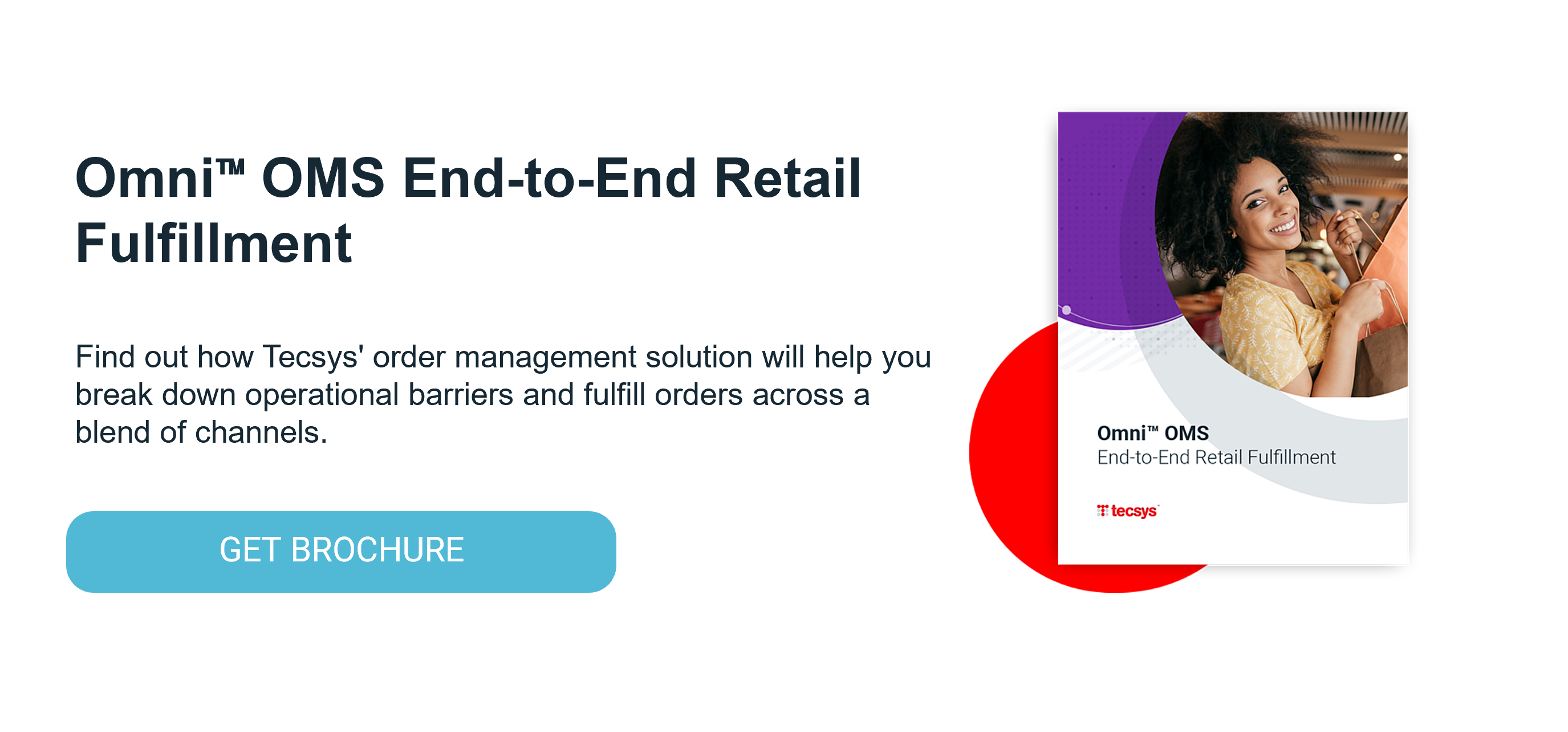What Exactly Is Enterprise Order Management?

Editor’s Note: This post was originally published in October 2018 and has been updated for freshness, accuracy and comprehensiveness.
Enterprise order management is the order management system (OMS) technology that enables retailers and brands to offer seamless omnichannel experiences while solving additional fulfillment complexity. Enterprise order management goes beyond the standard or “lite OMS” functionality that typically includes inventory visibility, order orchestration and some basic order routing.
Enterprise Order Management Capabilities
An enterprise OMS is scalable and able to handle high volumes of orders. It integrates seamlessly with many other retail technologies. Additionally, it can handle orders across borders, addressing the needs of retailers with operations in multiple countries (e.g., languages, taxes). It offers intelligent order routing that can be triggered by order features or line-item details, configurable to account for proximity, priority and availability of inventory. Customer management and store fulfillment modules round out the requirements of an enterprise order management system. An enterprise OMS with a customer management module enables order creation and modification, appeasements, returns, fraud prevention and customer service as the store fulfillment module enables click and collect orders.
Do I Need to Rip and Replace My Technology Stack?
Some enterprise order management vendors want to rip out your entire technology stack and start over with their full suite that bundles an assortment of either e-commerce platform (ECP), point of sale (POS), product information management (PIM), enterprise resource planning (ERP) or some combination of these, along with the OMS. In some ways it is an attractive proposition: starting over with an entirely new system. Wouldn’t that fix so many problems? What is often missed is that it could take two years to implement this vision. Furthermore, you must consider if you have the investment capital and human resources to pull this off. Is it worth it?
Below is advice to consider when weighing your two options:
1. Enterprise Order Management Without Rip and Replace
Getting a good enterprise order management system does NOT have to be a rip and replace strategy. Plugging in a specialized system can breathe new life into your existing technology stack. Plus, focusing on only implementing/replacing key technology to make omnichannel a reality – means going live within a couple months, not years.
2. Full Technology Stack Replacement
If a full ‘rip and replace’ is the only option, it’s recommended that you work with a trusted systems integrator (SI). Look at the SI’s track record and notice if their solutions always involve the same enterprise systems. Be suspicious if all roads always lead to one vendor. Instead, make sure you have the trusted opinion of a SI who implements converged commerce built on best-in-class technologies. For example, this could mean a technology stack composed of a best-of-breed OMS, a POS from a different vendor and an ECP from yet another vendor. Pulling together the best sub-systems can easily outperform single vendor unified commerce solutions.
Retail Help: Enterprise Order Management
Omnichannel retailing is here to stay. Shoppers’ awareness about buying options have increased. As more and more retailers adopt omnichannel practices, consumers’ expectations also grow. To meet these expectations, an OMS must be easy to use while also being able to flex and scale as the business grows and changes.
A full new technology stack replacement that includes an OMS (among other solutions) sounds like a nice idea, but it is costly and takes long to deploy. Rather, look for point solutions that can extend your existing ecosystem.
Fortunately, there are order management systems that are ready to go, right out of the box. You don’t have to replace your entire technology stack to achieve omnichannel greatness. That means bringing in enterprise order management technology that connects to your existing systems and gives you the best possible omnichannel retail capabilities, seamlessly and within budget.




